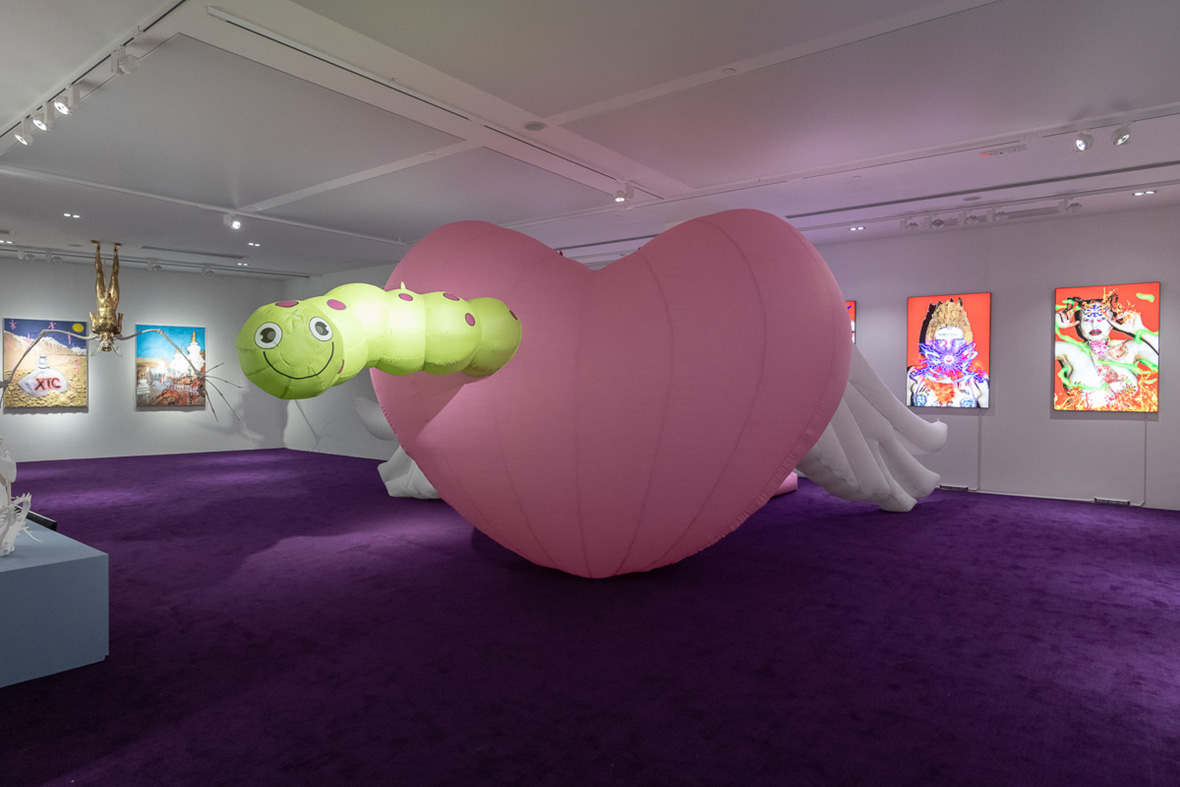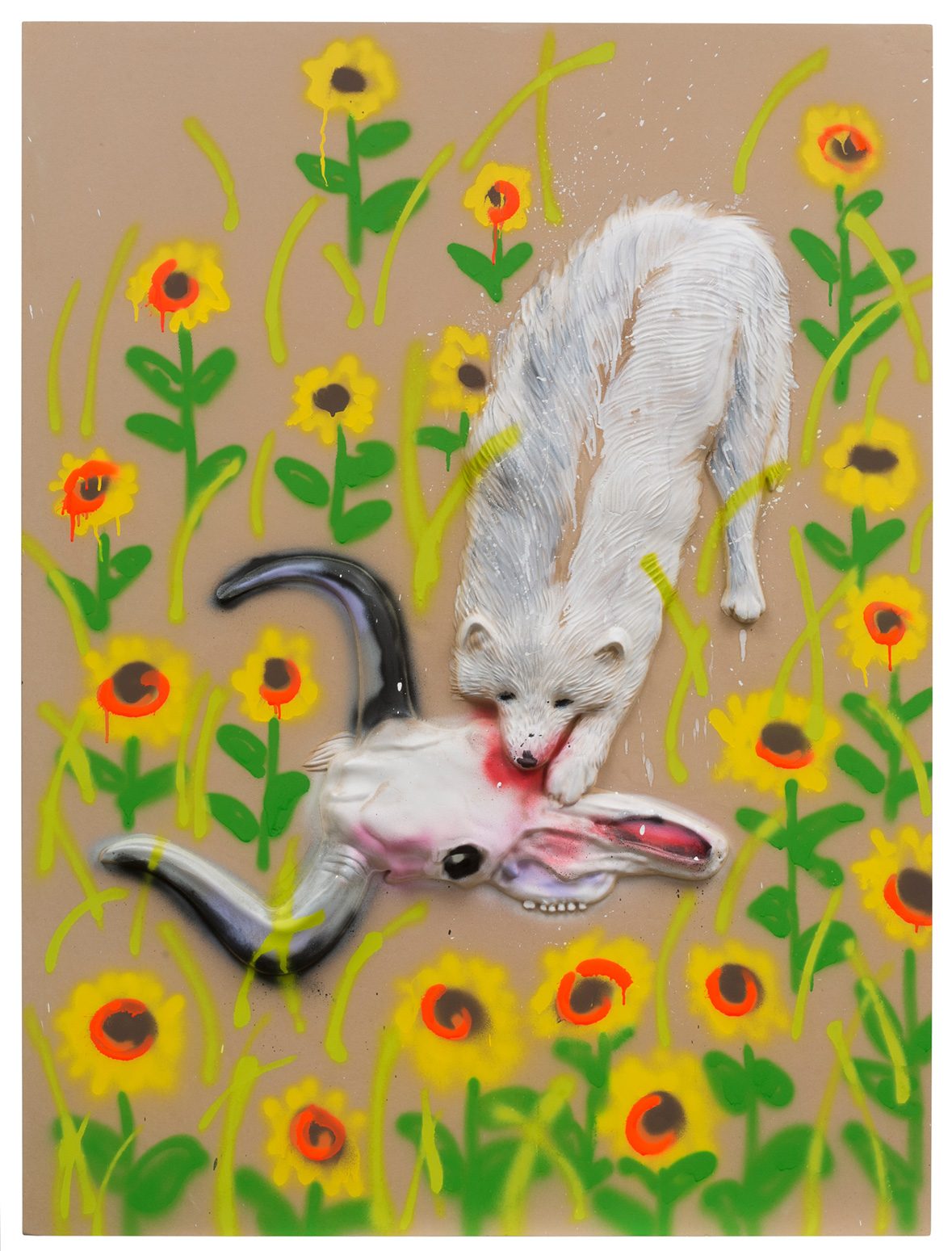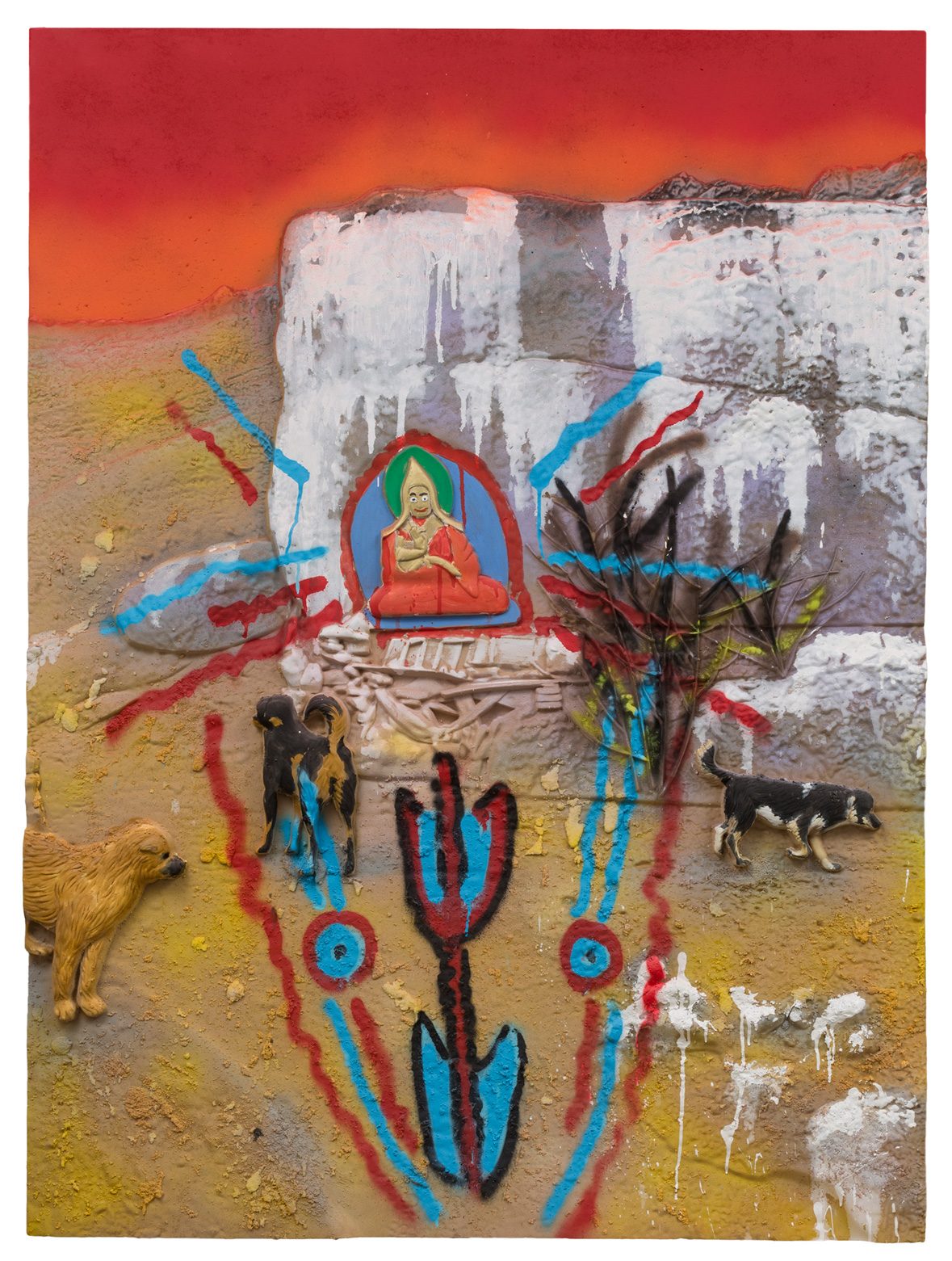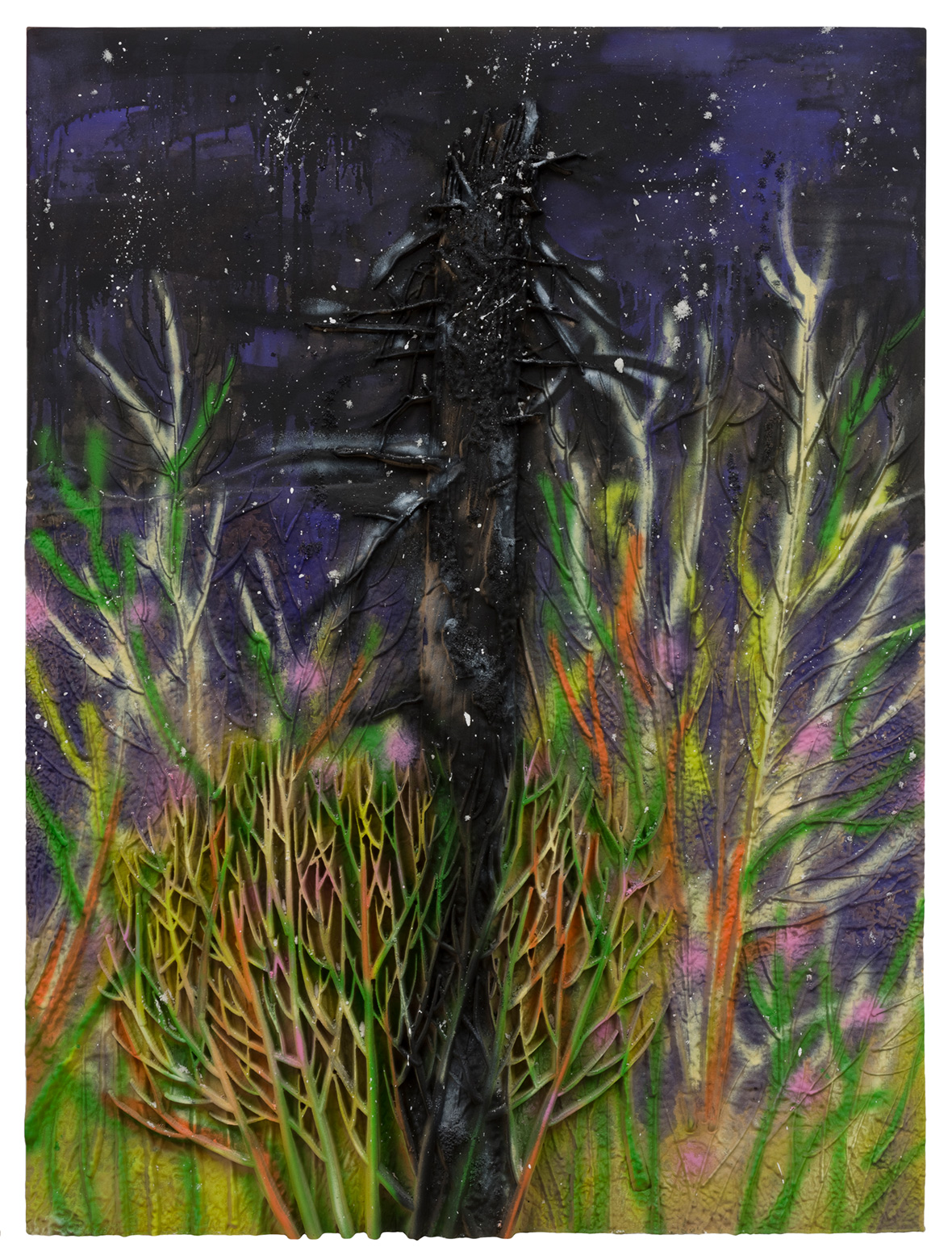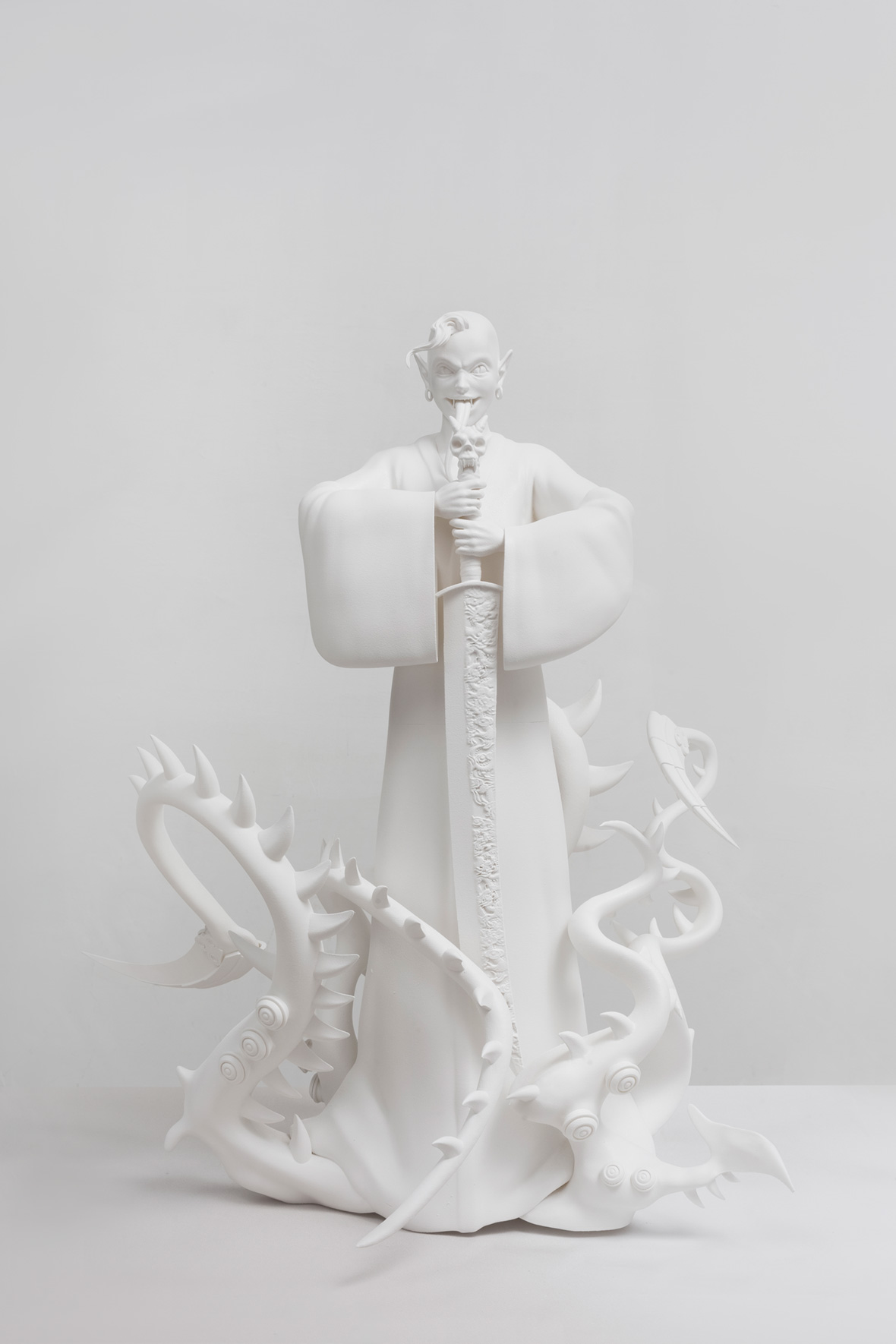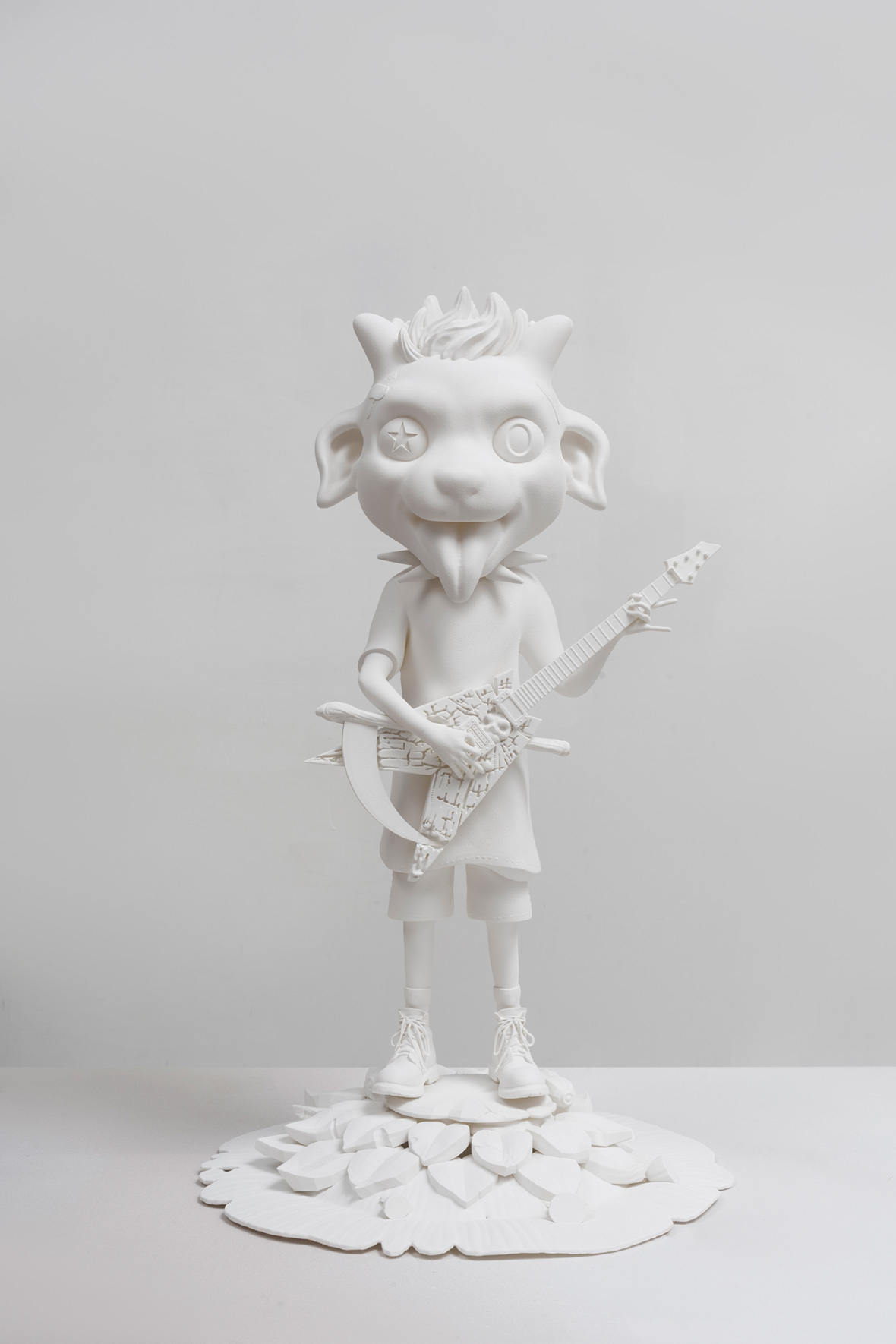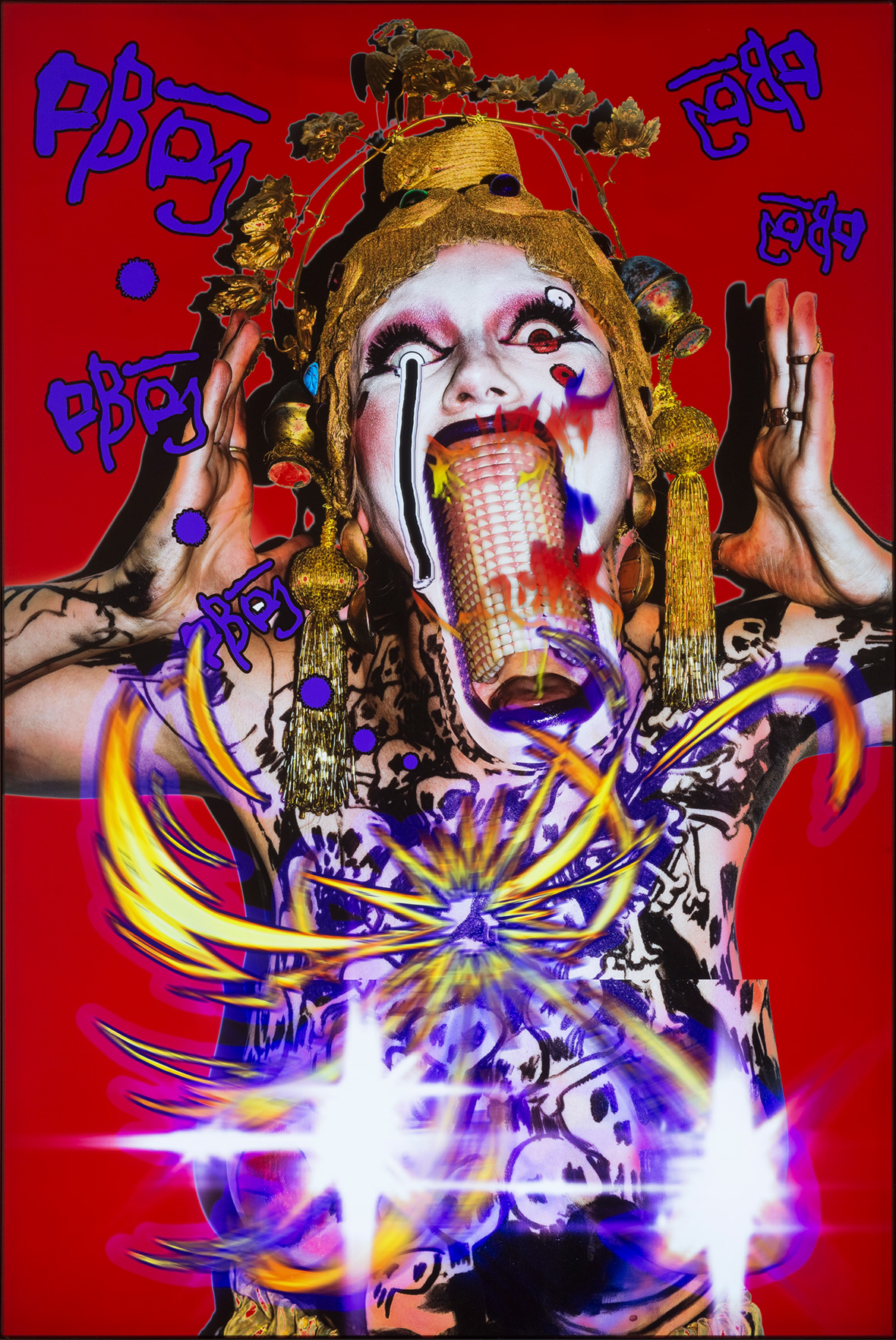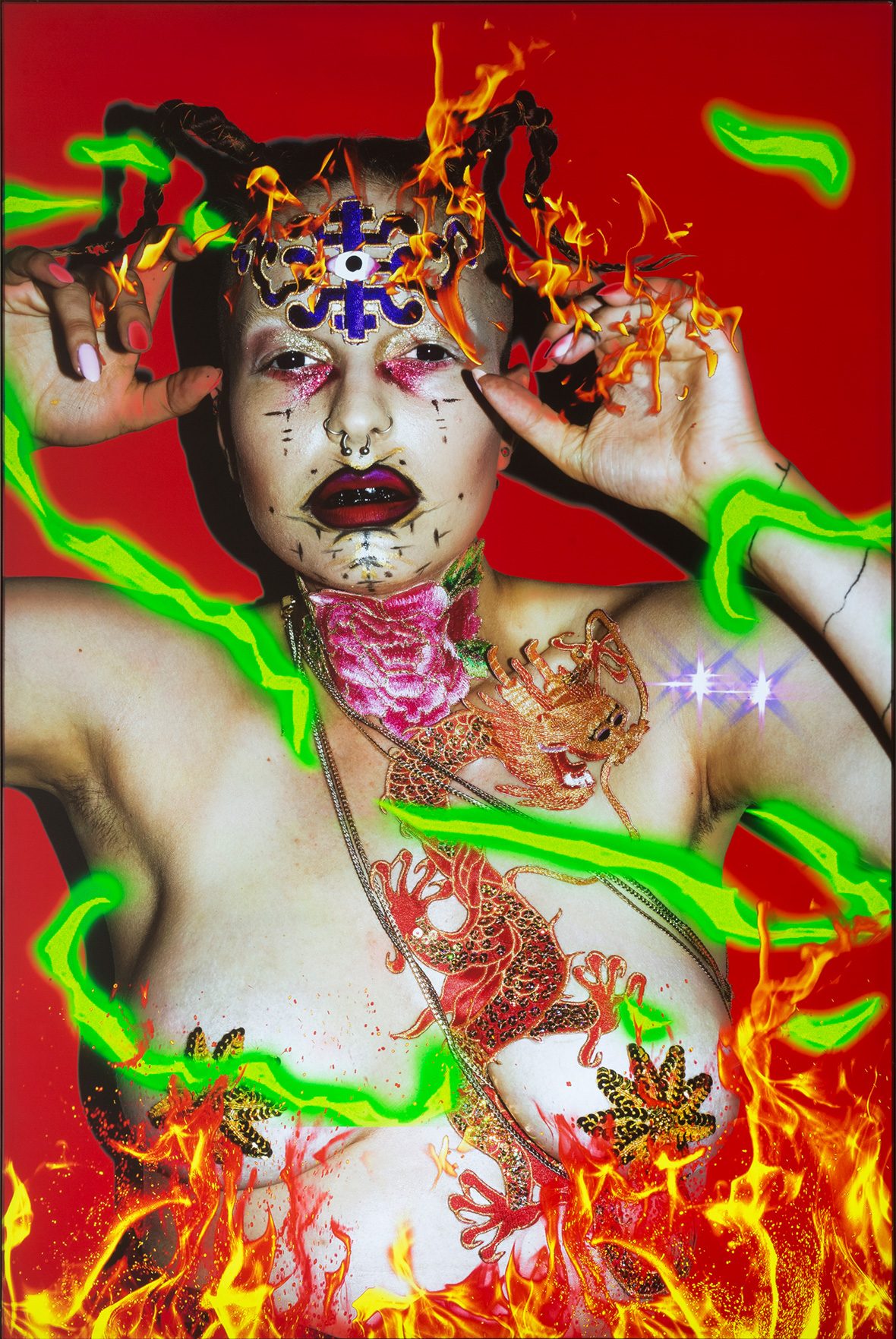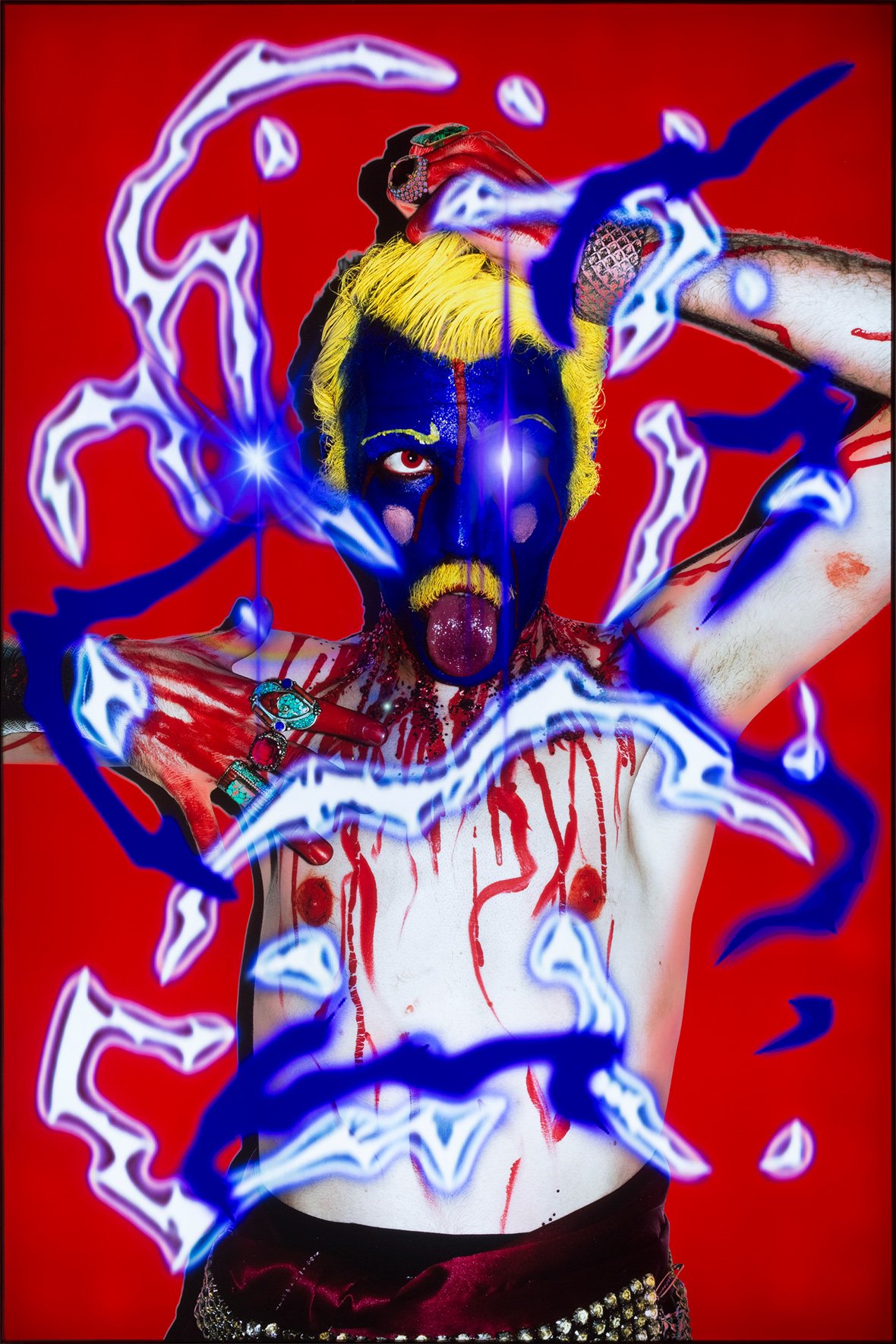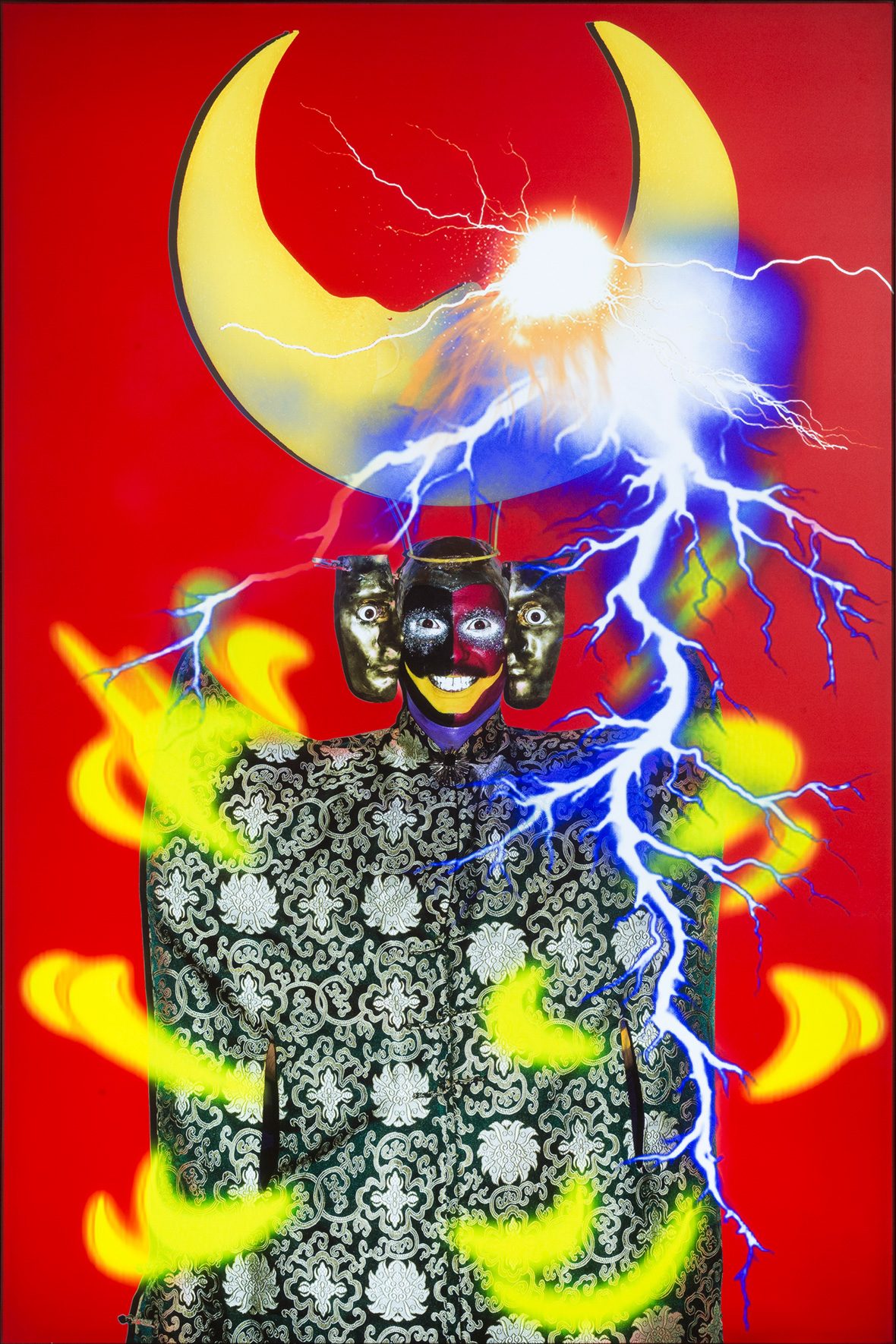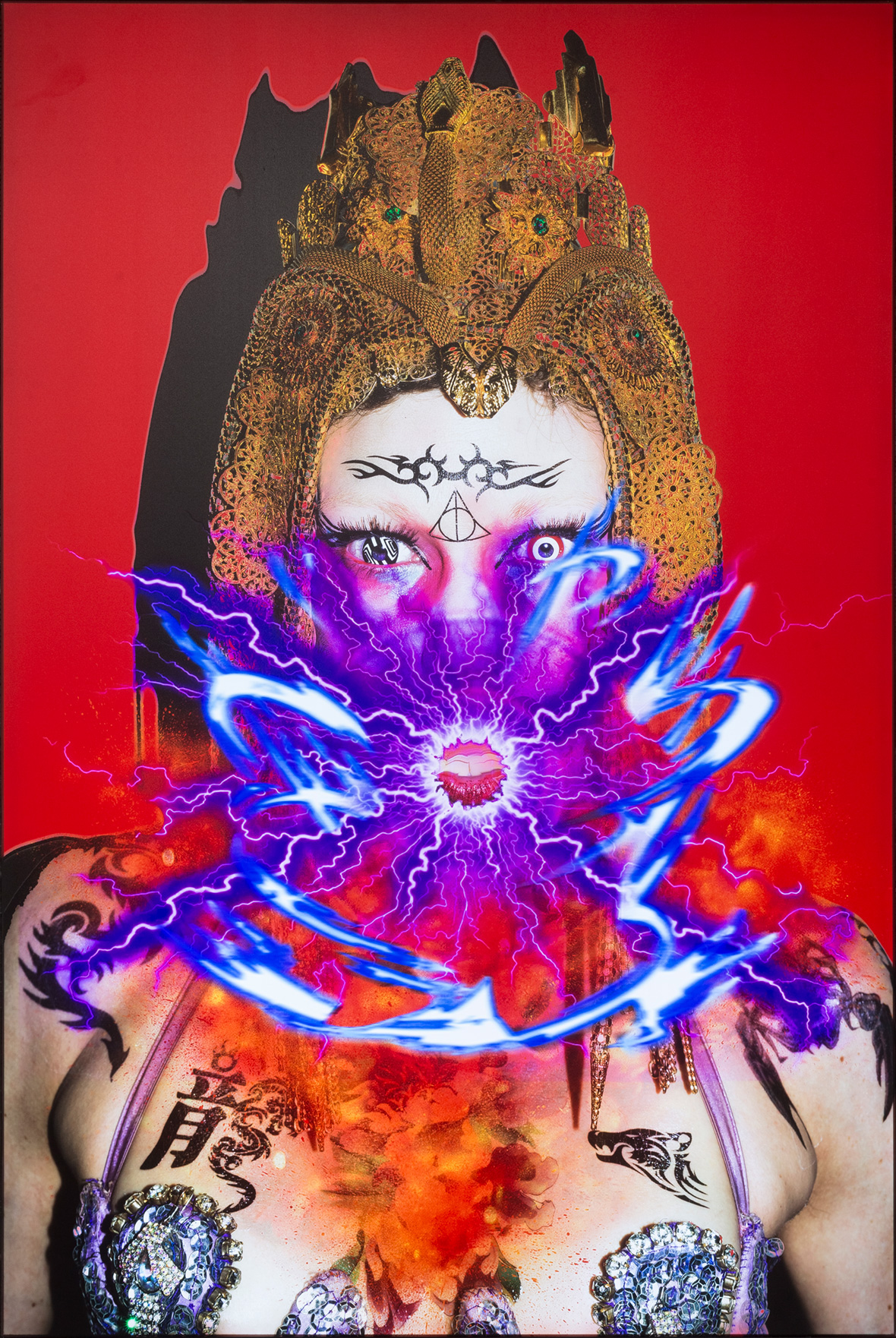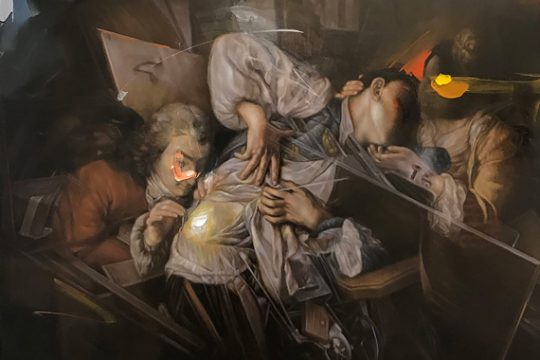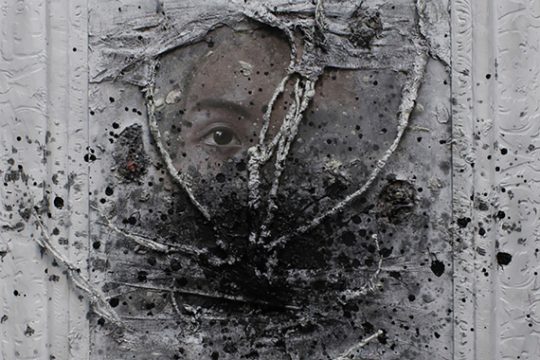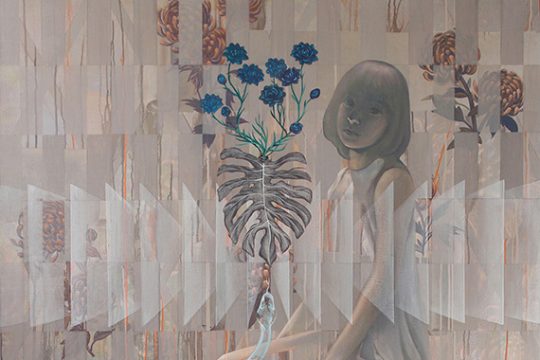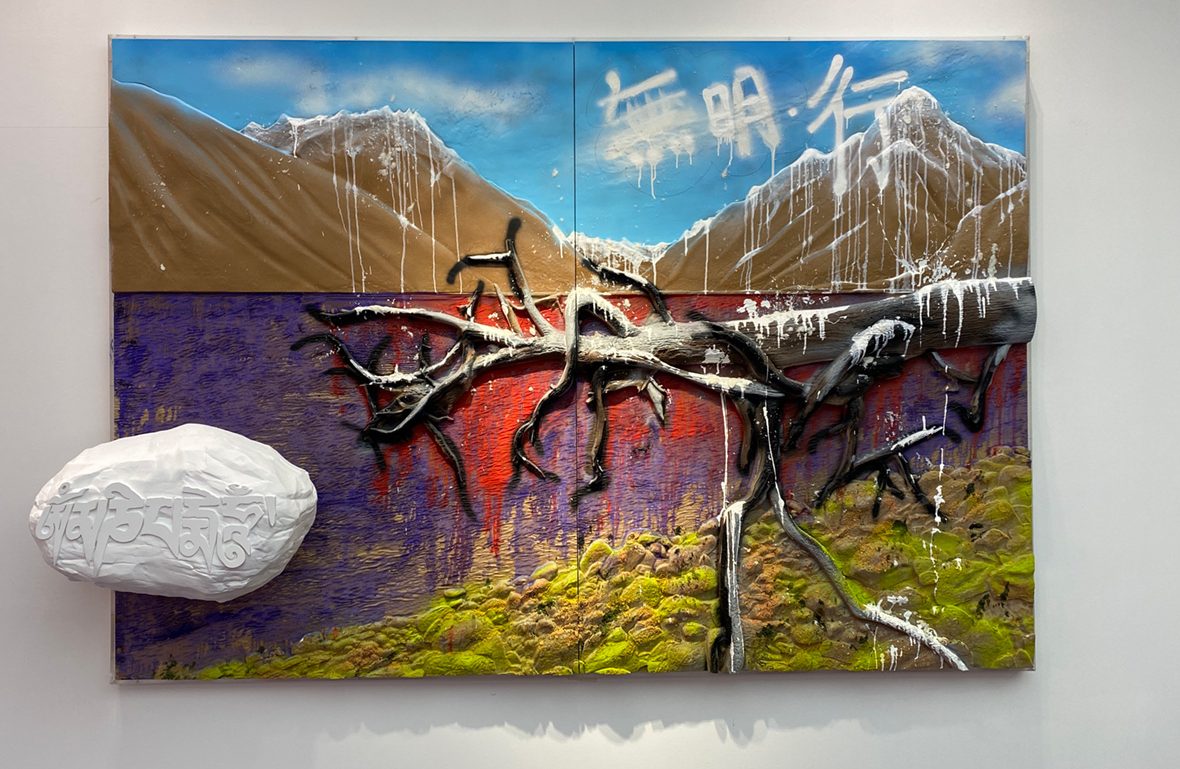
Much of our cultural vocabulary is rooted in belief systems that have constantly evolved throughout the centuries. In the Chinese language, the term used to describe the cause-and-effect of events is encapsulated in the Buddhist phrase, yīnguǒ (因果). The good fortune of making acquaintance with a like-minded person is regarded as yuánfèn (缘分), another expression borrowed from Buddhism. Such language, despite being derived from religion, is at the fundamentals of a secular society.
Chen Tianzhuo, born in 1985, belongs to a generation growing up within such a society but simultaneously experiencing a belief vacuum permeating its intellectual and cultural life. The search for spirituality is often accompanied by adapting rituals, belief systems, and mythology to contemporary understanding and needs.
在中文里,“因果”与“缘分”二词都起源于佛教。前者描述的是事件起因和结果;而后者则指与志趣相投的双方有幸邂逅。我们的语境中,不少字词都源于宗教文化,但已深深扎根于世俗社会。
1985 年出生的陈天灼,正是在这样的社会里成长的一代人,但在知识和文化方面,却又是生活在一片信仰的真空中。人们在精神追求方面,往往会因应现代生活的理解和需要,对宗教仪式、信仰体系和神话作出调整。
In his recently concluded exhibition, Recollection Pierces the Heart, Chen collated a kaleidoscope of icons and symbols from various religions, remodeling them into a visual vernacular that can be understood by the youth—which includes spraypaint scrawls and nods to rave culture. The painted works of the series are solely based on a recent trip to Tibet. In one painting, a barren tree branch is strewn across the scenery while a real stone protrudes from the bottom of the frame, a jarring element designed to disrupt the tranquility that the majestic mountain ranges originally evoked. But even more surprising is perhaps the three Chinese characters, wúmíng xíng (無名行), which translate to “Anonymous, Journey,” haphazardly scrawled against the sky-blue backdrop like amateur graffiti.
在他的展览《回忆刺穿心脏》中,陈天灼整理了一系列宗教符号和手势,加入了墙面喷绘和点赞文化等,将它们重塑成青年人可以理解的“视觉白话”。这系列的绘画作品源于他最近一次的西藏之行。在其中一幅画中,一根干枯的树桩横穿整个画面,还有一块真石头则从画面下方突出来。这些不和谐的元素打破了雄伟山景原有的宁静氛围。但更令人意外的是画面上的三个汉字“無名行”(意为“无名的旅程”),歪歪斜斜地写在蓝色天空上,就像随意的涂鸦一样。
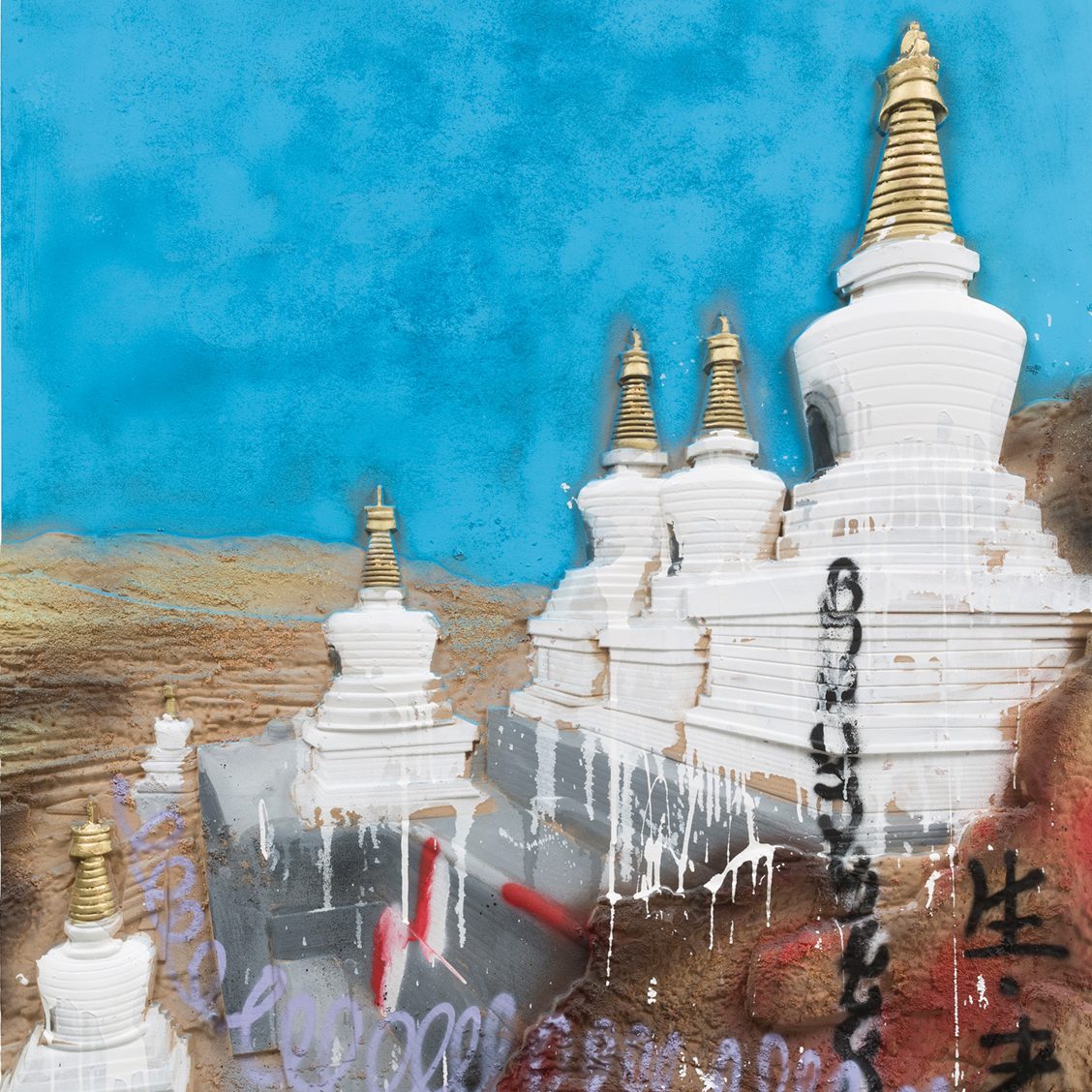
Deeper into the heartland of the plateau and Chen’s imagination, five white stupas—Buddhist structures that house sacred reliquary—come into view. The gold of the stupa echoes the sandy hue of the arid land. Similar to the previous painting, crude graffiti markings are scribbled across the image: there is a message, one from Buddhist scriptures, written in Chinese atop the craggy terrain: birth, old age, death. The cycle of life.
Inhabiting the plateau are animals of the high altitude. In another painting, Chen’s tableau sees Tibetan mastiffs roaming around a temple ruins on which an image of a lama was painted. Unlike an icon that arouses awe in the passers-by, the lama assumes an awkward, comical expression with unproportionate facial features. The irreverent lama portrait, when alongside the sloppily drawn totem-shaped graffiti that covers the foreground, doesn’t feel all that strange. These works, contrasting the gravitas of a spiritual pilgrimage with lazy graffiti art, are a reminder that travelers like himself are tainting sacred lands such as Tibet by bringing a piece of their own urban, consumerist culture when they visit.
进入高原的中心地带,陈天灼的想象也变得更深入,五座白色佛塔(用于存放圣骨的佛教建筑)映入视野,金色佛塔顶与干旱土地相互呼应。与之前的作品一样,这幅画中也出现了粗劣的涂鸦符号,在崎岖的峭壁上,写着一条中文佛教经文:“生、老、死”,寓意生命的循环。
在高原生活着一些特别的动物,譬如在另一幅画中,陈天灼画了在寺庙遗址上游荡的藏獒,遗址上还画着一个喇嘛画像。不同于人们常见的那些严肃的喇嘛形象,画中的喇嘛有着夸张的五官,露出尴尬、滑稽的表情。这幅不敬的喇嘛肖像四周是一些胡乱涂画的图腾,充斥着画面的前景,以至于喇嘛画像看上去显得毫不突兀。这些作品将严肃神圣的元素与随意的涂鸦艺术相结合,似乎在提醒人们,像他这样的游客,正用自己带来的城市消费主义文化,玷污西藏这片圣地。
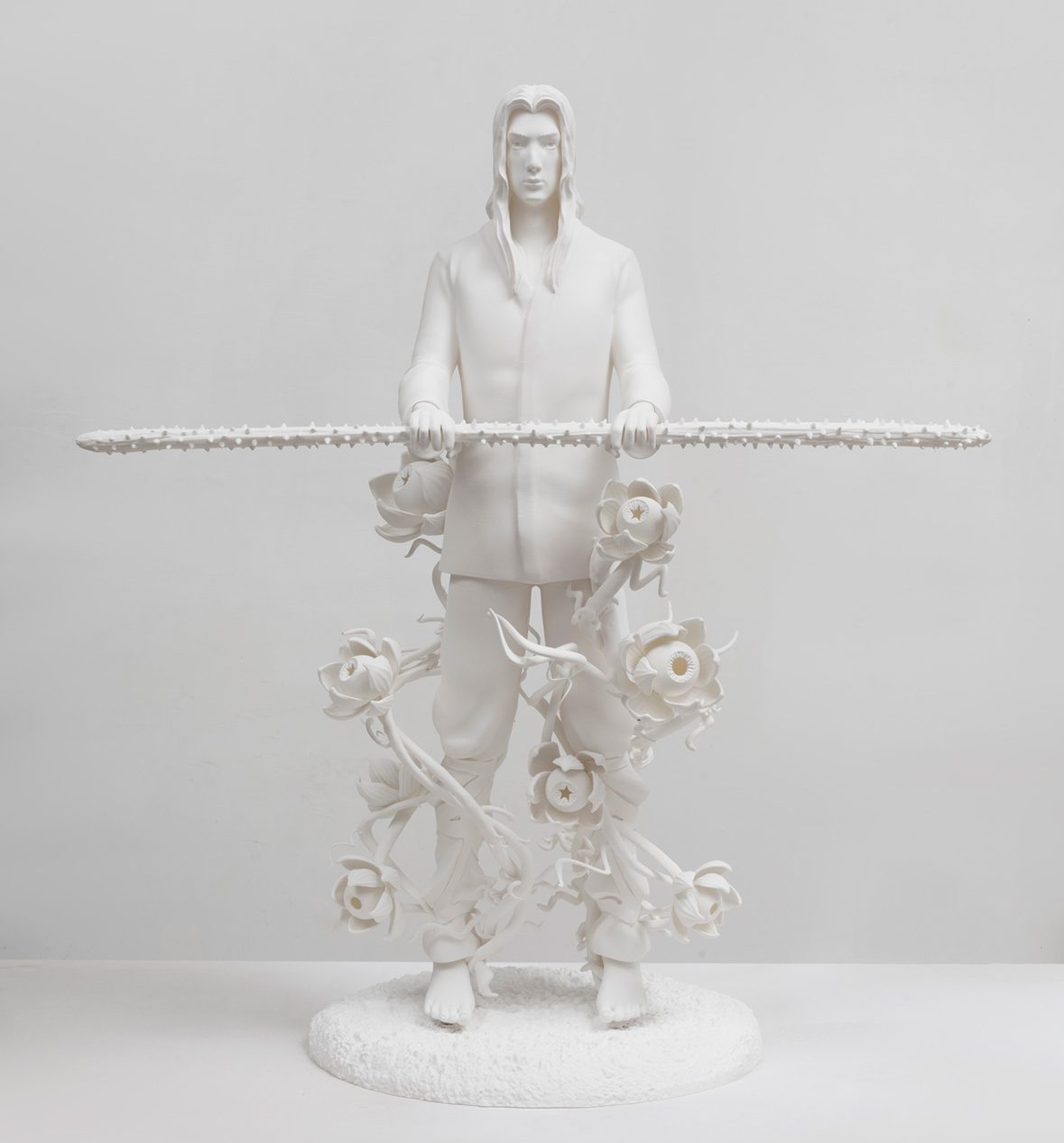
Elsewhere in the exhibition, a low display table hosts a row of 3D-printed figurines. Video-game protagonists of the future merged with mythical creatures of unknown origin. There is a cyberpunk aesthetic that somehow blends seamlessly into designs that draw from Japanese anime, Chinese folklores, and Hindu myths. With influences culled from such a wide range of sources, it’s difficult to pinpoint precise origins.
One figurine is shown with his tongue stuck out, a characteristic that could be either attributed to Kali, the goddess of death and time in Hinduism, or the spirit escort to the underworld from Chinese grandmas’ tales. He wields a sword engraved with serpent dragons while thrashing tentacles resembling reptilian tails emerge from beneath his robe. Another figurine with long hair and Caucasian features brandishes a thorned quarterstaff. His combative stance is a striking contrast with the vines and flowers winding up his legs, elements that typically symbolize evoke gentleness, innocence, or purity.
在展览另一端,摆放着一个展示台,里面是一排 3D 打印的雕像。未来的电子游戏主角与神秘的神话生物糅合在一起,将网络朋克美学无缝融入日本动漫、中国民间传说和印度神话的图案符号。如此宽泛的取材,令人难以精确定义作品的灵感来源。
其中一个雕像伸出舌头,其灵感可能是印度教的死亡和时间女神迦梨(Kali),也可能是中国民间传说中护送亡灵的使者。这个雕像挥舞着一把刻有蛇龙的剑, 同时长袍下面扭动着像动物尾巴一样的触角。另一个雕像有着一头长发和白种人的五官,挥舞着布满棘刺的长棍,双腿缠绕着藤蔓和鲜花,这些元素通常象征着温柔、纯真或纯洁,这与他准备作战的姿态形成了鲜明对比。
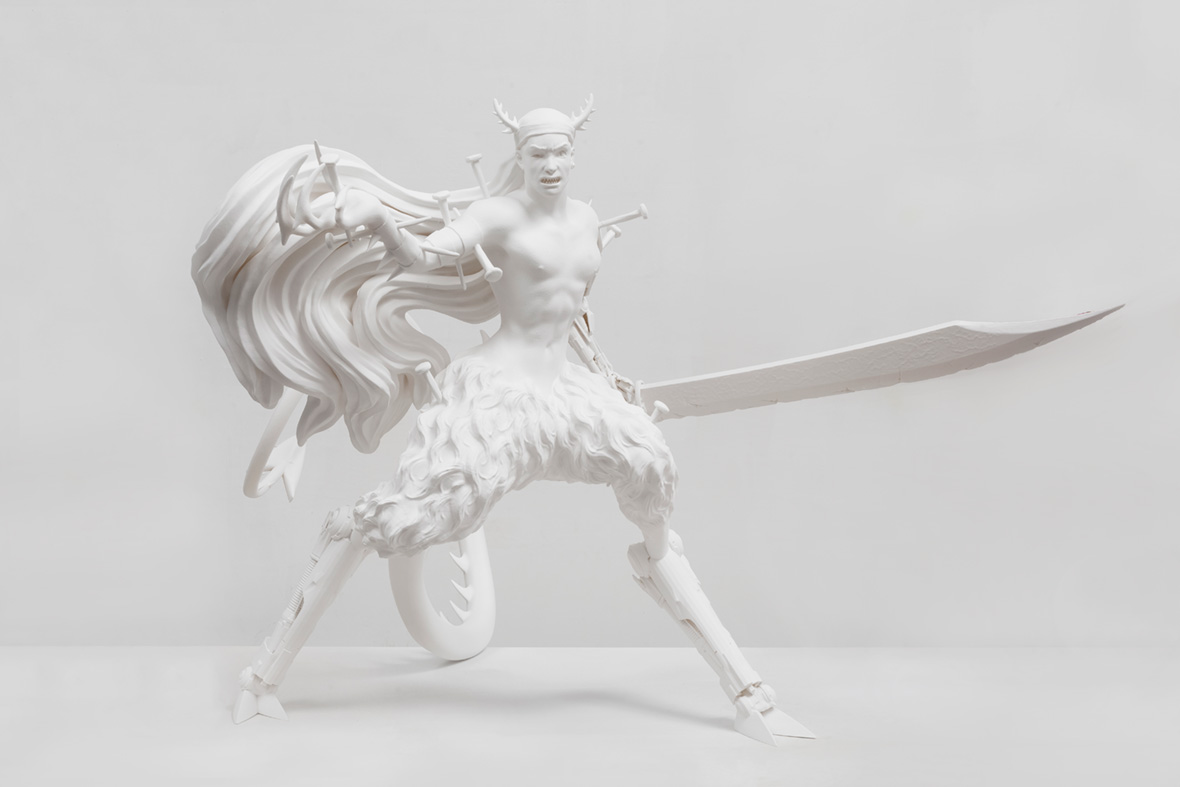
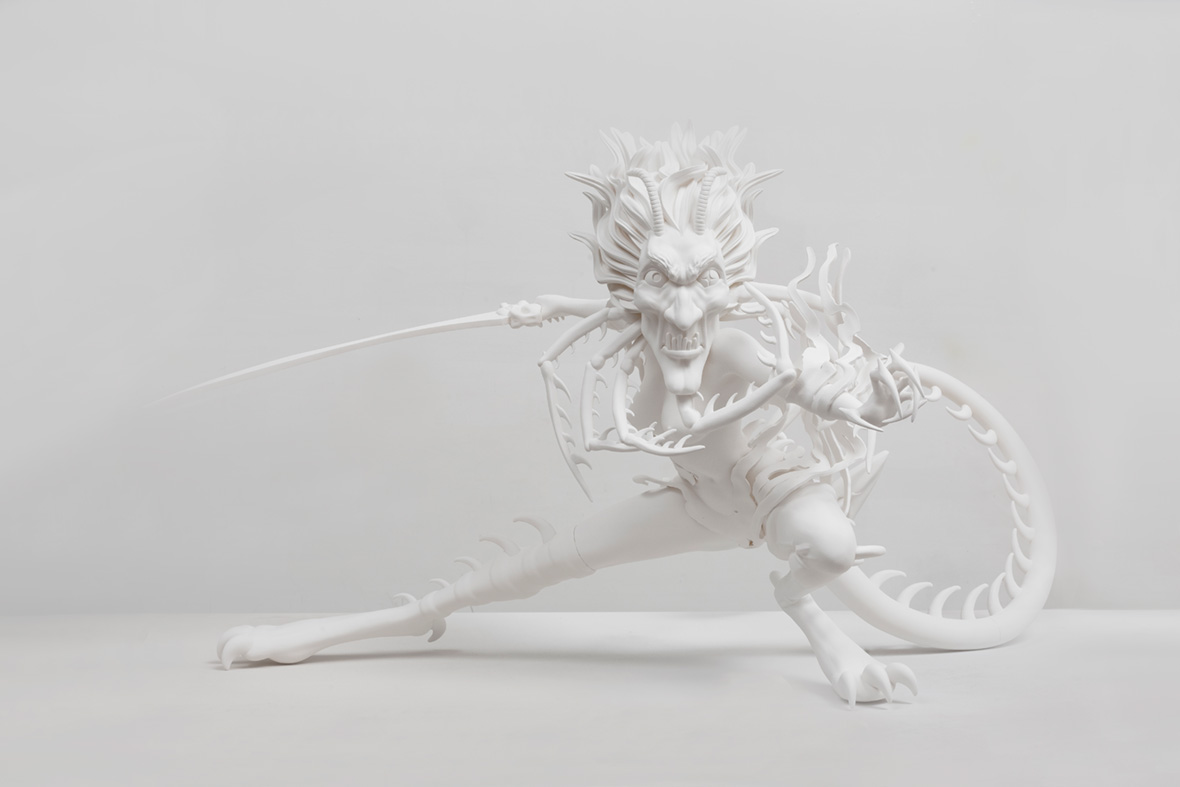
The closer one examines these 3D models, the more visual references come to mind: Ao Guang, the Dragon King of the West from The Journey to The West, an elf from the fantastical world of J. R. R. Tolkien, a samurai of ancient Nara, and more Even established religions, folk customs, and shamanism appear in various forms. Chen’s mix-and-match method of combining these disparate symbols and icons is his way of repackaging beliefs to fit snugly with today’s cosmopolitan taste.
仔细端详这些 3D 雕像,你会联想到更多不同到角色:《西游记》中的海龙王敖广、托尔金笔下魔幻世界里的精灵、古代日本奈良的武士,以及各种宗教、民俗和萨满教的元素。陈天灼将这些截然不同的符号和元素混搭在一起,以现代视角重新包装各种宗教信仰。
Such an approach is especially evident in his lightbox portraits. One lightbox depicts a man with three faces, another one with upper rows of replicated teeth, conjuring imagery of multi-faced, multi-limbed wrathful gods, such as Vajrabhairava in Tantric Buddhism. All of these deities are heavily bejeweled with allegorical motifs from Chinese folk traditions, such as dragons, auspicious double-knots, peonies, and more. And yet, despite the time-honored symbols decorating the figures, they are void of the awe-inspiring qualities of the celestial beings. The palette of red, magenta, neon green, and hot pink is borderline gaudy, exacerbated by the tattoos on their foreheads and torsos With large swathes of riotous colors and intricate patterns dominating the frame, not an inch of negative space is left.
这种创作理念在他的灯箱肖像画中尤为明显。在一幅灯箱画中,他描绘了一个有三张脸的男人,另一幅灯箱画上长着一排复制的牙齿,令人想起那些有着多张面孔、肢体繁多、神情凶狠的神灵,譬如密宗佛教中的金刚大威德。这些神像糅合丰富的中国民间传统图案,如龙、象征吉祥的如意结、牡丹等。然而,虽然布满历史悠久的符号,但这些画像却不像传统神灵那种令人敬畏。画面中充满各种大红、洋红、荧光绿和亮粉色,加上人物前额和身体上的纹身,令画面显得近乎花里胡哨;狂乱色彩与复杂的图案主宰着整个画面,不留下一寸空白。
It is hard to say if Chen is looking to create a simulacrum of the urban reality for us, or if he’s aiming to renovate our conventions of faith into consumables. The near-sacrilegious representation of sacred themes is part of his ongoing search into the notion of perception, an exploration of how people understand originality, universality, and more importantly, traditions.
As author James Baldwin once observed, “it is absolutely inevitable that when a tradition has been evolved, whatever the tradition is, that the people, in general will suppose it to have existed from before the beginning of time and will be most unwilling and indeed unable to conceive any changes in it. They do not know how they will live without those traditions which have given them their identity.” The origin of most traditions is centuries behind us, and with the onset of technology, we are moving further away from them. In the modern day, what are we holding onto that can still be considered original and ancestral? Chen’s works perhaps lend a glimpse to the possibilities of an answer.
很难定义陈天灼的作品是为我们创造了城市现实的模拟幻影,还是将人们的信仰演绎成现代的消耗品。他以近乎亵渎式的方式来诠释神圣主题,这也是他对认知理念的不断探索之一,以此来探讨人们如何理解独创性、普遍性以及传统。
正如美国作家詹姆斯·鲍德温(James Baldwin)所说: “当一种传统演化而成后,无论这种传统是什么,大众总会认为这种传统起源于人类存在之前,并且不愿意也无法想象对这种传统作出任何变化。人们无法想象失去这些传统后的生活,因为正是这些传统赋予了他们身份。”大多数传统的起源于多个世纪之前,随着科技的发展,我们离传统已经越来越远。在今天,还有什么是真正原创的、千古流传下来的东西呢?陈天灼的作品或许能让我们一窥可能的答案。
Like our stories? Follow us on Facebook and Instagram.
Website: www.tianzhuochen.com
Instagram: @asian_dope_boys
Contributor: Ashley Shen
Chinese Translation: Olivia Li

